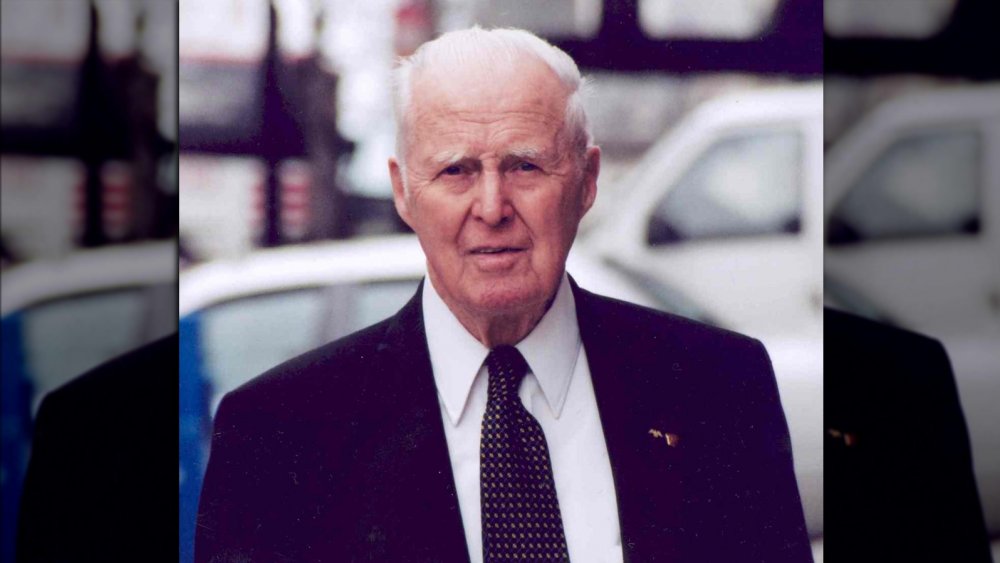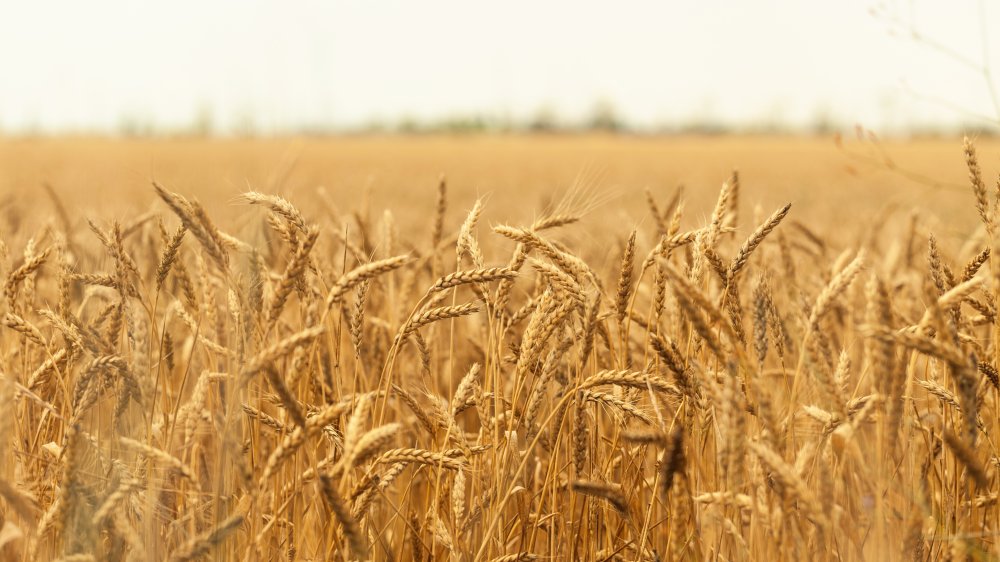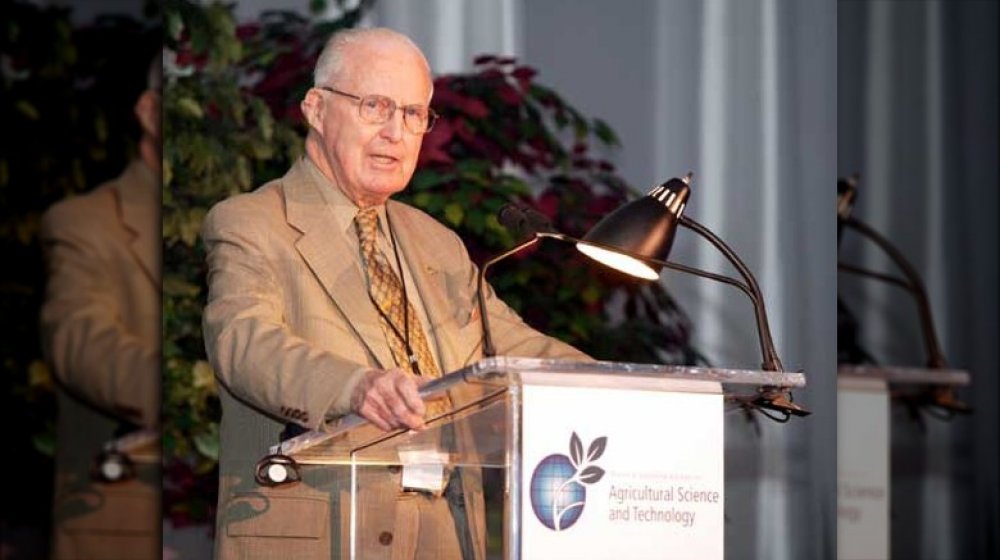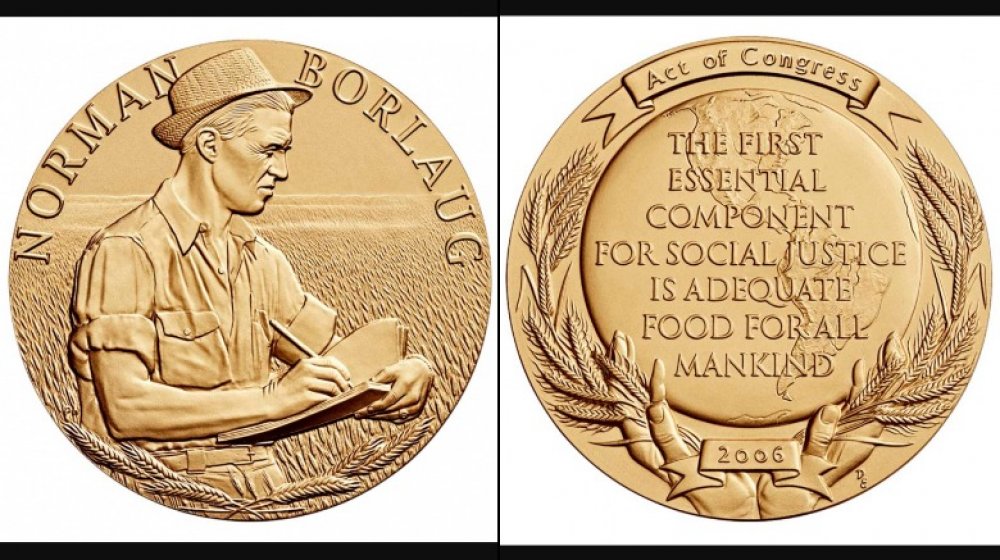The Truth About The Man Who Saved More Lives Than Anyone Else In History
If we're asked to imagine society's biggest saviors, we might imagine firefighters, doctors, or even Superman himself. Society is indeed full of heroic figures like these. But when it comes to the total number of lives saved, there is one man who has all these others beat. That man is the American agricultural expert Norman Borlaug, who, according to the University of Michigan, may have prevented over a billion deaths.
Per NobelPrize.org, Norman Borlaug was born in the small town of Cresco, Iowa in 1914, and spent his childhood working on his family farm. As he grew up, Borlaug was encouraged by his family to prioritize his studies. He attended the University of Michigan, and graduated with a PhD in plant pathology in 1942. During his college career, Borlaug was particularly interested in how plants could be genetically enhanced to become resistant to diseases.
While at college, Borlaug spent some time working for the Civilian Conservation Corps, where he oversaw a team of unemployed men, many of whom were on the brink of starvation. "I saw how food changed them," as the Dallas Observer quotes Borlaug. "All of this left scars on me." Some years later, after performing research on behalf of the U.S. military during World War II, Borlaug joined a task force in Mexico. It was there that he would perform his most famous research. In the 1940s, the Mexican government sought new agricultural techniques to support the nation's growing population.
Norman Borlaug turned Mexico into a powerhouse of wheat production
The Rockefeller Foundation, with the encouragement of the U.S. government, agreed to help Mexico in this pursuit. Per the Rockefeller Foundation's website, the Foundation established the Mexican Agricultural Program (MAP) in 1943, staffed by both Mexican and American scientists. In 1944, Norman Borlaug joined the program. The MAP had a few primary functions, including genetic research and soil development. Borlaug helped lead the team dedicated to breeding more successful wheat. Per Reason, after many years of careful research and experiments with cross-breeding, Borlaug's team was radically successful, producing several types of high-yield, disease-resistant, dwarf wheat. Borlaug's wheat was so successful that, by 1963, it made up 95 percent of all the wheat grown in Mexico, per the University of Minnesota. Plus, in 1963, Mexico saw a wheat harvest six times larger than in 1944 — the year Borlaug had arrived. Borlaug was proud of his wheat, and would soon spread it to other countries.
Around that time, the global population was booming, which frightened many experts. Per Smithsonian, a book called The Population Bomb by Stanford professor Paul Ehrlich predicted that "hundreds of millions of people are going to starve to death" in the 1970s and '80s. Many people agreed with Professor Ehrlich's predictions. But Borlaug's work would prove them wrong.
The Indian government was impressed by the success of the MAP program in Mexico, and requested that Norman Borlaug and his dwarf wheat seeds come to India.
Norman Borlaug's wheat may have saved a billion people from starvation
Borlaug agreed, per Forbes India, and in 1963 he arrived in a country on the brink of famine. Working with the Indian government, Borlaug distributed his miracle wheat to farmers across the country, and taught them the agricultural techniques needed to sustain it. He followed a similar approach in Pakistan soon after. Alongside his science, Borlaug also lobbied the governments of India and Pakistan to pay poor farmers fair prices for their crops.
According to Reason, "In Pakistan, wheat yields rose from 4.6 million tons in 1965 to 8.4 million in 1970. In India, they rose from 12.3 million tons to 20 million" — almost double the output in just five years. This massive increase in agricultural production, which soon spread to other parts of the world, has been labeled the "Green Revolution," and as CapX writes, Norman Borlaug is remembered as the Revolution's father.
The American scholars who had predicted global famines had been proven wrong. Thanks to the work of Borlaug and his associates, developing countries had more than enough wheat to sustain their growing populations. As a result of this work, sources like The Atlantic suggest that Borlaug may have saved one billion people from starvation. Of course, the exact number of people is impossible to know — but if it's anywhere near that figure, Borlaug would likely be the greatest life-saver in human history.
Norman Borlaug won the Nobel Peace Prize in 1970
Borlaug's wheat was a godsend to humanity, but the Green Revolution didn't end there. Per Reason, in the 1960s and '70s, many plant geneticists borrowed from Borlaug's research. Some developed high-yield rice varieties that saved millions more people from starvation across Asia. For his work reducing famine — and, as a result, reducing conflict — Norman Borlaug received the Nobel Peace Prize in 1970. Per The New York Times, Borlaug continued to fight global hunger until his death in 2009 at the age of 95.
Borlaug is remembered by many as a hero, but he was not without his critics. As Salon reports, some environmentalists feared that Borlaug's emphasis on the growth of one crop (aka "monoculture") could have disastrous results. Other skeptics warned that the Green Revolution contributed to greater global overpopulation. Some activists, like Alexander Cockburn, quoted by the Sunday Business Post in 2003, suggested that Borlaug's efforts created far more profits for big business than they did for the global poor.
Borlaug took such critiques seriously, but he disagreed. The Atlantic offers one solemn quote from Borlaug: "Some of the environmental lobbyists of the Western nations are the salt of the earth, but many of them are elitists. They've never experienced the physical sensation of hunger ... If they lived just one month amid the misery of the developing world, as I have for 50 years, they'd be crying out for tractors and fertilizer and irrigation canals..."



